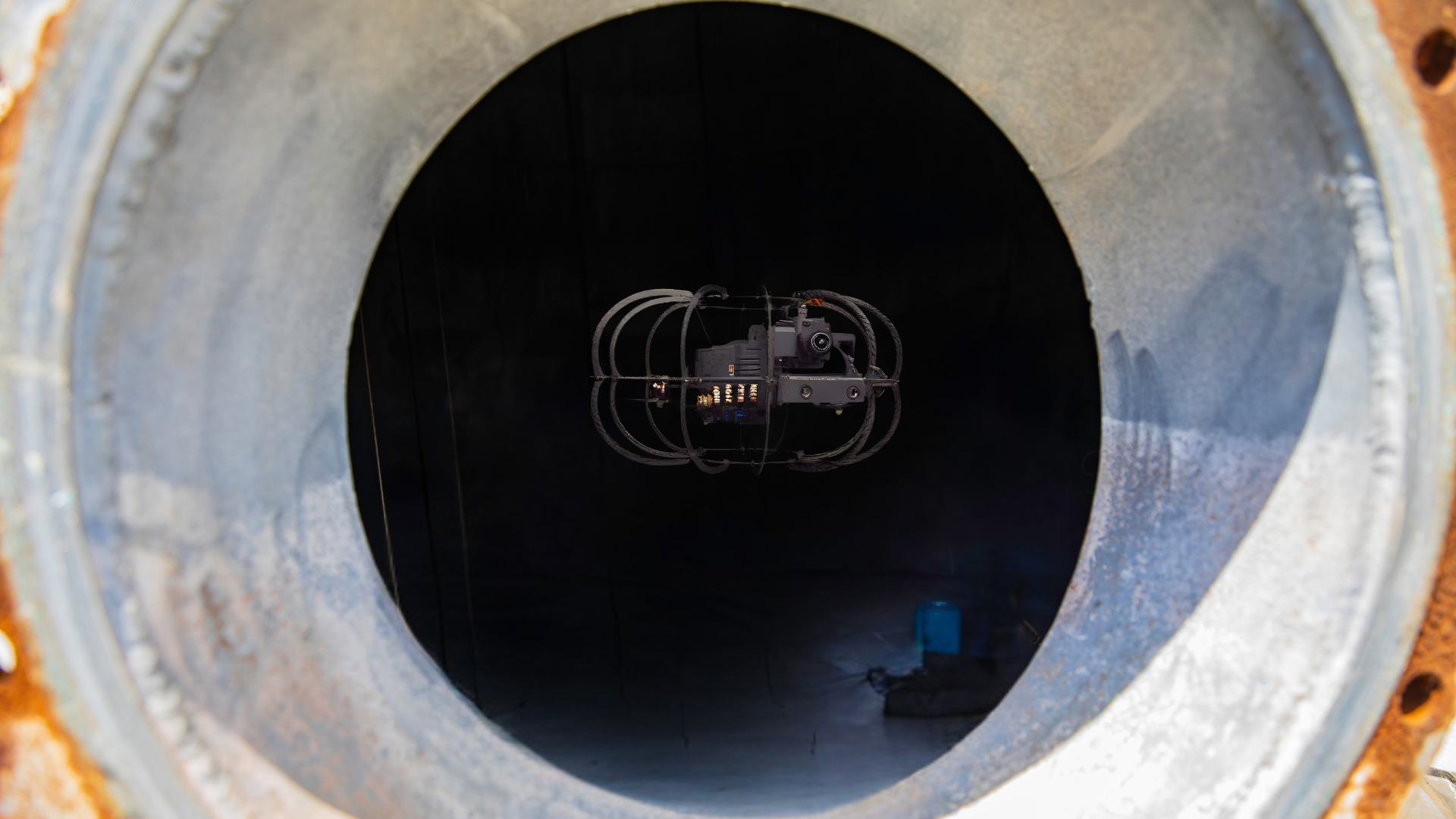In the industrial world, infrastructure inspection is an essential step in guaranteeing proper functioning, durability and, above all, operational safety. Among the most reliable and widely used methods today is television inspection, also known as ITV. Essential for the maintenance of sewer networks, pipes and confined spaces, this technology enables access to areas inaccessible to the human eye, while limiting risks and costs.
But what does a TV inspection actually involve? How does it work, and what are the best technological solutions available? Multinnova key player in innovation for confined spaces, sheds light on this technology, which is as discreet as it is effective.
What is a television inspection?
Televisual inspection is a method of remote visual inspection, carried out using a camera inserted into an enclosed space that is often difficult to access. The camera transmits real-time images of the interior of a pipe, conduit, tank or other industrial equipment.
This process is particularly used in wastewater networks, petrochemical plants, power stations and underground infrastructures. The aim? Precisely visualize the state of internal structures, detect anomalies invisible from the outside, and intervene in a targeted manner.
Historically, TV inspections emerged as an alternative to human intervention in high-risk environments. Today, they have become an industry standard, not least because of their accuracy, efficiency and cost savings.
How does a TV inspection work?
An ITV generally follows a well-established procedure, divided into four main stages:
Preparation and location
Before any inspection, a reconnaissance phase is essential. This enables us to identify access points, spot any obstacles (deposits, debris, stagnant water) and define the technology to be used, depending on the diameter, configuration or environment of the network to be inspected.
In sewer systems, prior cleaning is often necessary to guarantee image legibility.
Hardware deployment
The choice of equipment depends mainly on the diameter and configuration of the network. Three main families of tools are used today:
- Manually-operated cameras, suitable for small straight ducts (generally under 200 mm);
- Motorized inspection robots, capable of covering long distances and negotiating bends and inclines;
- Inspection drones, reserved for confined aerial spaces such as industrial chimneys or technical galleries.
Once the equipment has been positioned, the operator takes remote control via a console. The image, transmitted live, is viewed in real time.
Inspection and registration
Exploration is carried out methodically. The camera, often rotating and equipped with a powerful LED light, films every detail of the interior wall: cracks, deposits, infiltrations, corrosion, deformations, etc. The videos are archived, sometimes geolocated, and associated with technical data (length, inclination, speed of movement, etc.).
Analysis and report
The images are then analyzed by specialized operators. The resulting report can be coded in accordance with the NF EN 13508-2+A1 standard, commonly used for sewer system inspections. This document is then given to the customer, along with recommendations for action if necessary.
Why carry out a TV inspection?
There are many technical, economic and human advantages to ITV. Here are the main reasons why manufacturers turn to ITV:
Increased safety
One of the first benefits of TV inspection is that it eliminates the need for operators to be exposed to hazardous environments. In confined or polluted environments, sending in a robot or drone eliminates the need for technicians to physically enter the site, thus reducing the risk of accidents.
Time saving
A well-conducted ITV enables rapid diagnosis of the state of a network or infrastructure. It avoids costly dismantling or prolonged downtime.
Economy
By pinpointing faults, ITV enables corrective action to be targeted. As a result, unnecessary repairs, premature replacements and additional costs due to unplanned stoppages are avoided.
Reliable diagnosis
Thanks to the high definition of today's cameras, inspections offer an unrivalled level of detail. Combined with analysis software or AI, they enable a fine reading of the state of materials, their ageing or the first signs of failure.
Innovative solutions for ITV
The evolution of technology has profoundly transformed the way television inspections are carried out. Multinnovthe French specialist in inspections in confined environments, has developed high-performance, robust tools adapted to complex industrial environments.
The Roview2: an all-terrain wireless inspection robot
The Roview2 is a TV inspection robot specially designed for difficult-to-access pipes and networks. Compact, wireless and equipped with a rotating HD camera, it can cover dozens of meters in total autonomy.
Its cable-less design allows great freedom of operation, even in congested or semi-submerged environments. It's the ideal solution for non-accessible or partially water-filled pipes. It combines efficiency, safety and robustness, while offering precise visualization of the pipe interior.
Stereo2: an indoor inspection drone for confined spaces
In overhead environments (chimneys, technical galleries, silos), the Stereo2 drone from Multinnov is setting the standard. Lightweight, stable and equipped with a 4K camera and powerful LED lighting, it can inspect structures up to several dozen meters high, without GPS or external signal.
Thanks to its advanced stabilization systems, it moves effortlessly in confined, dark spaces, capturing images of the utmost clarity. Its use drastically reduces the need for scaffolding or rope access, while speeding up diagnosis.
In just a few years, television inspection has become an indispensable practice in many industrial sectors. It combines safety, precision and economy, while guaranteeing a high level of expertise.


